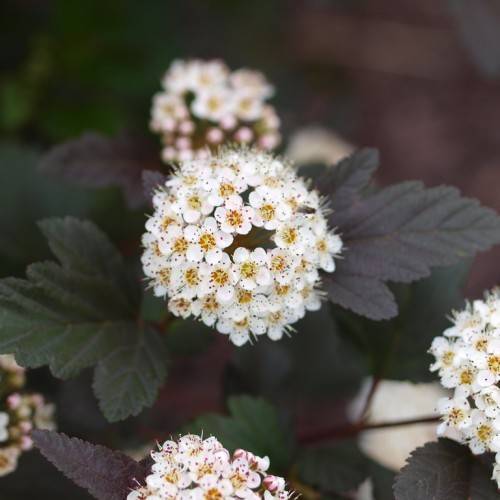
ninebark
Physocarpus opulifolius 'Diabolo'
Cycle:
Perennial
Watering:
Minimum
Hardiness Zone:
3 - 7
Flowers:
Flowers
Sun:
Full sun,part shade
Leaf:
Yes
Growth Rate:
Low
Maintenance:
Moderate
Drought Tolerant:
Yes
Salt Tolerant:
Yes
Care Level:
Medium
watering
Ninebark (Physocarpus opulifolius 'Diabolo') should be watered 2 to 3 times per week and the soil should remain moist. The amount of water depends on how quickly it is absorbed and the soil's moisture level. During summer, more water may be necessary. For established plants, watering twice per week should be sufficient, but in extended hot and dry periods more frequent watering may be needed. Allow the top inch or 2 of soil to dry out before watering again.
sunlight
Ninebark (Physocarpus opulifolius 'Diabolo') is a deciduous shrub typically found growing in USDA hardiness zones 3-7. For best performance, this plant species requires full to partial sunlight. This means that at least 6 hours of direct sunlight should be provided per day during the growing season. It can tolerate some shade, but will flower best in a sunny location. For optimal growth, avoid planting this shrub in overly shaded areas.
pruning
Ninebark (Physocarpus opulifolius 'Diabolo') is a deciduous shrub with arching branches and dark purple foliage. Pruning should be done in the early spring to keep the plant healthy and manageable. Pruning should be kept to a minimum, focusing primarily on removing dead, damaged, or diseased branches. If needed, prune to control size or to promote bushiness. To open up the center of the plant, thin out the interior branches by about 1-third to promote new growth and air circulation. Prune low, downward-facing branches to create an airy, billowing silhouette. Generally, ninebark is best pruned lightly at the end of winter when it is still dormant. Pruning later in the season can reduce flowering.
